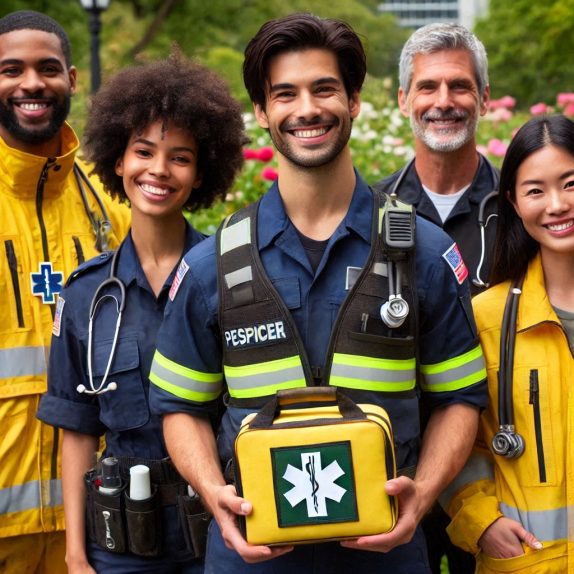
When a crisis strikes—be it a natural disaster, a large-scale emergency, or even a global pandemic—health and hygiene often take a back seat in the rush to manage immediate threats. However, infection control is crucial in ensuring that those affected stay as healthy as possible. From sanitation to protective gear, infection control practices can make the difference between a manageable situation and one that spirals into a public health disaster.
In the chaos of a crisis, hygiene and infection control can easily be overlooked, especially when the focus is on addressing the immediate and visible damages, particularly the https://lifeskillsaustralia.com.au/counselling-services-perth/critical-incident-response/. However, the spread of infectious diseases is often one of the most dangerous outcomes of an emergency situation. With overcrowded shelters, limited access to clean water, and an influx of people in distress, the risk of infections multiplying is high.
In any emergency, basic human needs like food, water, shelter, and medical care are the immediate priorities. However, neglecting infection control can lead to an outbreak of diseases like influenza, norovirus, or even more deadly pathogens like cholera or COVID-19. These infections can spread quickly in overcrowded conditions, and without proper hygiene practices, the crisis can evolve into a public health emergency of its own.
For example, during large-scale evacuations or in refugee camps following disasters, people often share communal spaces with limited access to sanitation. If proper hygiene protocols aren’t in place—such as clean water for drinking and handwashing or proper waste disposal—these settings become breeding grounds for diseases. Even something as simple as handwashing can prevent the spread of viruses and bacteria that would otherwise infect large groups of people.
The Power of Proper Sanitation
Sanitation is one of the most effective tools in preventing infection during a crisis. When people are displaced by a hurricane, wildfire, or war, they often lose access to their normal sanitation facilities. This leaves them vulnerable to diseases spread by contaminated food and water and those transmitted by poor hygiene practices. In these situations, health workers must act quickly to provide access to clean water, working toilets, and waste disposal systems. These may seem like basic needs, but they can be a lifesaver in a crisis.
To prevent contamination, portable sanitation units—like toilets, handwashing stations, and disinfecting agents—must be readily available. Ensuring that these facilities are set up and maintained regularly becomes a priority. Even the simple act of handing out hygiene kits to individuals in crisis can go a long way. These kits often contain hand sanitizer, disinfectant wipes, soap, and face masks—items that are essential in maintaining cleanliness and limiting the spread of illness.
Protective Equipment Saves Lives
Personal protective equipment (PPE) is another key aspect of infection control. First responders, medical personnel, and volunteers play a critical role in managing a crisis, and they need to be equipped to protect themselves from potential infections. In certain situations—such as responding to an outbreak of a contagious disease like Ebola or COVID-19—PPE becomes absolutely essential. It includes things like gloves, masks, face shields, gowns, and sometimes even full-body suits, depending on the level of risk involved.
In high-risk situations, PPE helps prevent healthcare workers from becoming infected while treating patients. But it’s also important for the general population in some emergencies. For example, during the early days of the COVID-19 pandemic, the widespread use of masks became an essential part of infection control, even outside of hospitals. Simple things like wearing gloves and masks during an evacuation can help reduce the spread of germs and prevent the community from becoming a hotspot for infection.
Training and Awareness
Training and awareness are crucial to maintaining infection control in emergency situations. Local and international responders must know how to implement hygiene practices, educate the affected population, and stay vigilant for any signs of infectious diseases.
Training doesn’t just apply to healthcare professionals, either. People in the affected community also need to know how to protect themselves. Handwashing, wearing masks, and avoiding close contact with sick individuals can all help reduce the risk of infection. Moreover, information about hygiene should be disseminated quickly—whether through printed materials, radio broadcasts, or community outreach—so that people can take the necessary steps to protect themselves.
The Role of Technology in Infection Control
During the COVID-19 pandemic, for example, many health organizations turned to digital platforms for contact tracing, symptom monitoring, and even delivering health advice. These technologies can be adapted to crisis situations to monitor and control the spread of infectious diseases. Apps that help with social distancing or tracking outbreaks can be invaluable tools for managing public health.
Additionally, drones and other technologies have been used to deliver supplies such as PPE or cleaning agents to areas that are hard to access. By leveraging technology, responders can ensure that resources get to where they are needed most, even in the most challenging environments.
